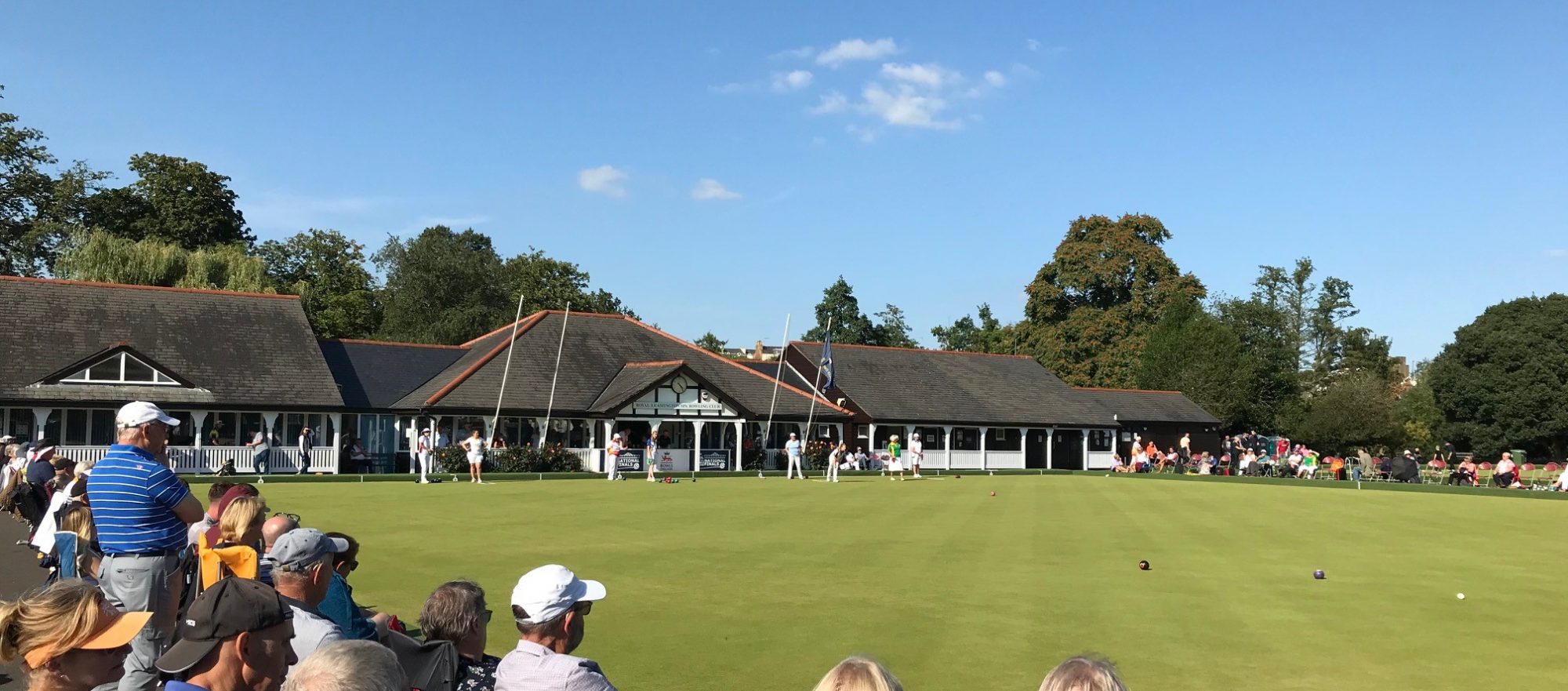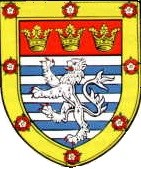The Hatfield Lawn Tennis Club was originally formed in 1897; the courts being located behind “The Poplars” on a quarter acre plot on what is now The Ryde estate and roughly where the back gardens of nos. 13 and 15 The Ryde stand today. The owner of “The Poplars” was Philip Thomas Rowlett who was the Club Secretary until around 1912 and who appears on the club honours board as winning the Championship in 1908.
The mention of a clubhouse first appears in the Kelly’s street directory about 1908/09. In the 1910 Rateable Assessments for the Parish of Hatfield the club is listed as assessment no.668 with a rateable value of £4.10s. “The Poplars” was demolished in the 1960’s to make way for the building of the town houses in Bull Stag Green and the redevelopment of The Ryde area.The tennis club survived until 1921 when it amalgamated with the Herts Croquet and Lawn Tennis Club based in Kennelwood Lane in the centre of Hatfield.
In 1924, after one of the croquet lawns had been converted to a bowling green, the title changed to the Hatfield Lawn Tennis and Bowling Club. In 1924, Teddy Higgs the singles champion in 1922-24, played at Wimbledon and represented England in the Davis Cup. Following the formation of the Hatfield New Town by the New Towns Commission and the pedestrianisation of the Hatfield town centre, the club was relocated again in 1964 to their current site in College Lane, Hatfield on land owned by the Commission. On the dissolution of the New Towns Commission the ownership of the land has changed a number of times and the land freehold is now with the University of Hertfordshire. The Club has a long lease on the land expiring in 2105.
The building of the clubhouse was in three phases, first the construction of a small clubhouse now occupied by the present club’s dining room and bowls changing rooms and included a small kitchen. The second phase was the addition of a four rink indoor bowling green, one of the first in Hertfordshire. The third phase was the linking of the two structures with what is now the clubs lounge area which included a bar and bar store in the corner next to the indoor bowls area. Major refurbishments were carried out and extensions added in 1990 to incorporate the Scott Room, office, kitchen and bar area.
The Outdoor Bowls Club has provided a number of Hertfordshire County Presidents, both men and women, over the years and winners of County and National titles. June Boosey (1994), Kay Havord (1994, 1990-2002), F.I.Smith (1960/61) and Gerald Scott (1961) distinguished themselves internationally and played for England. Gerald Scott was also well known for his years as Hertfordshire Honorary County Secretary.
In 1966 the Indoor Bowls Section was formed and again, over the years, has provided a number of Hertfordshire County Presidents, both men and women and a number of winners of County titles. Harry Haynes distinguished himself internationally and played for England between 1965 and 1975 leading for the legendary David Bryant. The club has also provided two England Presidents, T.Knight, as Chairman in 1973 and Roger Carter in 2002.In 1980 the club lost several acres of land, including tennis courts, by compulsory purchase for the construction of the A1 Motorway and Hatfield Tunnel which was completed in 1983. Unfortunately, due to lack of members, the Tennis Section ceased to exist in 1989. With the construction of many more indoor bowls stadiums in the County the Indoor Bowls section also lost a number of members but has since stabilised. The Social Section increased in membership organising various social events and forming a Darts Section playing in the local leagues.
A new use was found for the all-weather tennis courts which are currently used for five-a-side football. The badge of the Hatfield Bowling Club is the shield of the coat-of-arms of the Rural District Council of Hatfield who obtained the grant of arms in 1945 and readily acceded to the request of the Club for permission to use the arms as the club badge. As a whole the shield depicts the history of Hatfield, the heraldic description being – “Barry of ten argent and azure a lion rampart ermine on a Chief Gules three ducal Coronets or all within a Border with eight Tudor Roses proper”. The chief of the shield is taken from the arms of the See of Ely, the field from the arms of the Marquis of Salisbury of which the Lion Rampart is a supporter. The town’s connection with the House of Tudor is portrayed by the border charged with eight Tudor Roses.The monks of Ely set up a community at Hatfield in 970 AD and duly built a church. In 1108 AD the abbey was converted into a bishopric and Hatfield became one of the residences of the Bishop of Ely. King Henry VIII coveted this property and in 1534 AD the then Bishop resigned both the Lordship of the Manor and the Palace to the King. It was at Hatfield House that Elizabeth I spent her childhood. Hatfield remained a Royal Palace until the reign of James I who, when he came down from Scotland stayed at Theobalds, the seat of Sir Robert Cecil (afterwards the first Earl of Salisbury) and was so taken with it that he offered him the Royal Palace at Hatfield in exchange. Since then Hatfield has been the principal seat of the House of Cecil.

